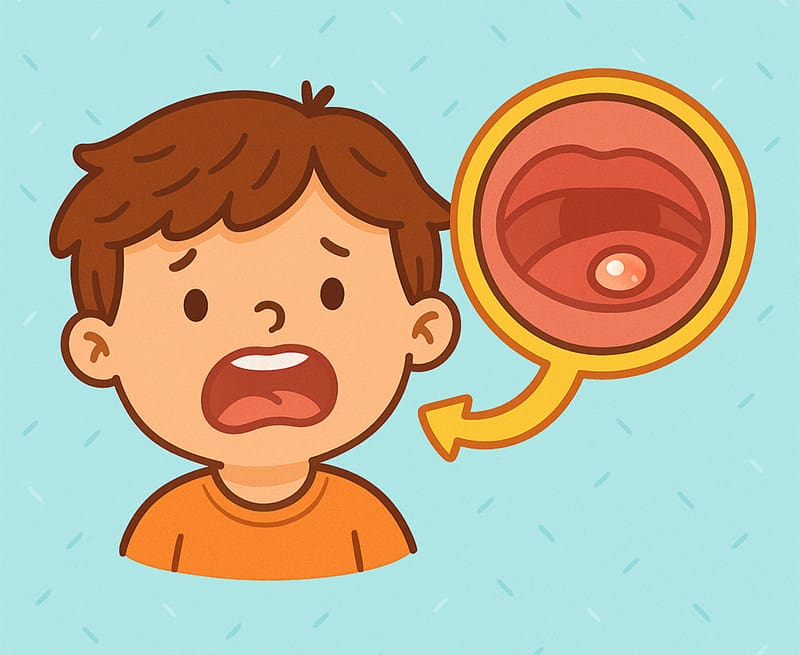
Most of us have been there: you go to eat, talk, or brush your teeth, and suddenly you notice a sharp, nagging pain in your mouth. A closer look reveals a small, round sore—white or yellow in the center, surrounded by a red ring. Despite the tiny size, it is without a doubt uncomfortable. Chances are, that’s a canker sore.
Canker sores are incredibly common, and while they usually aren’t serious, they can be surprisingly disruptive to daily life. So, here’s what to know about them!
What Exactly Is a Canker Sore?
Canker sores—also known as aphthous ulcers—are small, shallow lesions that develop inside the mouth: on the cheeks, lips, tongue, or gums. They’re not contagious, and they don’t come from a virus. They’re different from cold sores, which appear on the outside of the mouth and are caused by herpes simplex virus.
These sores are benign, but they can cause enough pain to interfere and increase sensitivity with speaking, eating, and even smiling.
Common Triggers
While the exact cause of canker sores isn’t always clear, several factors can increase the likelihood of getting one:
- Minor mouth injuries, like biting the inside of your cheek or irritation from dental appliances
- Stress or lack of sleep, which can weaken the immune response
- Nutrient deficiencies, especially in iron, folate, or vitamin B12
- Certain foods, such as citrus, tomatoes, coffee, chocolate, or anything acidic or spicy
- Hormonal changes, particularly for some people around menstruation
- Toothpastes or mouthwashes containing sodium lauryl sulfate (SLS), a common foaming agent
Some people are simply more prone to canker sores, especially if there’s a family history.
How Long Do They Last?
Most canker sores heal on their own in 7 to 10 days, with discomfort usually peaking in the first few days. While they tend to resolve without treatment, that doesn’t mean you have to suffer through them.
What You Can Do for Relief
There’s no instant cure, but several strategies can reduce pain and help speed up healing:
- Use a saltwater or baking soda rinse to gently clean the area
- Apply over-the-counter topical treatments with numbing or anti-inflammatory properties (like benzocaine or hydrogen peroxide gels)
- Avoid irritating foods—acidic, spicy, and crunchy items may worsen the pain
- Switch to an SLS-free toothpaste, especially if you get sores frequently
- Keep stress in check with sleep, hydration, and supportive routines
Staying mindful of potential triggers and giving your mouth a break can make a big difference.
When to Follow Up with a Professional
In most cases, canker sores are nothing to worry about. But it’s worth seeing a dentist or doctor if:
- A sore lasts more than two weeks
- You develop unusually large or frequent sores
- Pain becomes severe or spreads
- You also experience fever, fatigue, or swollen lymph nodes
Occasionally, recurrent or severe canker sores can be linked to underlying health conditions like autoimmune disorders, celiac disease, or inflammatory bowel disease. A healthcare provider can help rule these out or suggest appropriate next steps if necessary.
Canker sores are common, irritating, and thankfully temporary. While you can’t always prevent them, small changes in your oral care, diet, and stress levels can make a big difference. If you’re dealing with one right now, be gentle with yourself (and your food choices) until it heals
